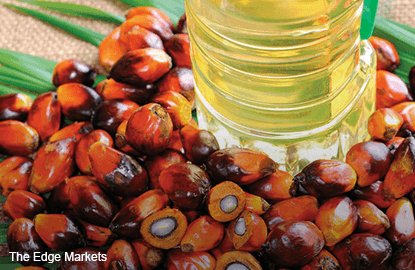
KUALA LUMPUR/BEIJING (Jan 25): As China welcomes the Year of the Rooster this week, bets that a recovery in Asian palm oil production will drive prices lower may be something for consumers to crow about.
While high prices may keep Chinese buyers on the sidelines in the first part of the new year, an expected surge in supply later in 2017 in the world’s top producers will drive a jump in purchases as prices decline, according to analysts and traders. China begins a week-long Lunar New Year holiday on Jan 27 and palm oil is used to fry noodles, dumplings and spring rolls.
China’s imports plunged 24% to 4.48 million metric tons in 2016, the lowest since 2005, as benchmark futures surged 25% after El Nino squeezed supplies in Indonesia and Malaysia. A weaker yuan and state sales of rapeseed oil reserves also reduced the attractiveness of palm oil for local buyers. With production set to recover in the two biggest producers in the second half, prices should fall to levels that attracts Chinese buying, according to veteran edible oils analyst James Fry.
“China, like India, is a price-sensitive market,” Fry, the chairman of LMC International Ltd, said in an interview in Kuala Lumpur on Jan 17. “As we get a ramp up in palm production, then we will see China buying more palm oil.”
The El Nino between 2015 and early 2016 reduced global palm oil output by 6.8 million tons last year, Ling Ah Hong, director of Malaysian plantation consultant Ganling Sdn Bhd, said Jan 17. As rain returns, production in the second half of this year will recover strongly with double-digit growth each month, said Ling, who has 40 years experience in the plantation industry.
Increasing supply will soften prices, which may drop as low as 2,200 ringgit (US$496) toward the last quarter of the year, he added. Benchmark palm oil prices on the Bursa Malaysia Derivatives closed at 3,149 ringgit a ton on Tuesday.
“In the second quarter, following the recovery of production in major exporting countries, palm oil prices may decrease,” making it more competitive with soyoil and rapeseed oil and driving imports again, said Zheng Zuting, an analyst at China National Grain and Oils Information Center.
The decline in inbound shipments last year, coupled with low inventories, could see China’s imports recover sooner. Purchases may jump 10% to 15% in the first half, according to Tommy Xiao, an analyst at Shanghai JC Intelligence Co. They may reach 5.1 million tons to 5.2 million tons in the year started October 2016, from 4.7 million tons a year earlier, he said. CNGOIC estimates that imports may total 5 million tons in 2016-17.
Volumes still may not reach the records seen two to three years ago, when traders purchased large amounts to boost inventories for financing purposes, according to Gao Yanbin, an investment manager with agriculture investment firm Shanghai Shenkai Investment Co. Imports are now largely driven by demand, and inventories would be kept at a low level, said Gao.
“China may buy more palm oil in the third quarter, in line with higher production and possibly lower prices,” said Alan Lim, plantations and property analyst at MIDF Amanah Investment Bank Bhd. “The factor that consumers in China take into consideration is the discount between crude palm oil and soybean oil. If the discount widens, they will shift more of their consumption to palm oil.”